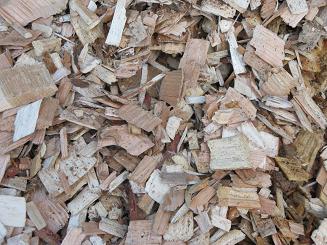Removing decaying wood from the forest disrupts the life cycle of decomposers (decay fungi, insects, bacteria, etc.), which in turn can disrupt the food source and habitat for other plants and animals. The degree of disruption to the native ecology …
What are the air emissions of burning wood?
When wood is burned, the combustion reaction produces heat and emissions in the form of water, organic vapors, gases, and particulates. The emissions of most concern are carbon monoxide (CO), carbon dioxide (CO2), sulfur oxides (SOx), and nitrogen oxides (NOx). …
Can wood grow fast enough to meet our energy needs?
Wood cannot meet all of our country’s energy needs—at most only about 10% nationally. However, it can help to meet our needs by providing a secure, renewable energy source. On a local level, wood can sustainably provide the energy to …
What are the reasons not to use wood for energy?
Communities should discuss a number of factors when considering whether using wood for energy is the right choice. While many factors may be location-specific, some factors to consider include the cost and sustainable supply of wood resources within a reasonable …
What is biomass?
Biomass is a term for living or recently living plant or animal materials such as solid wood, bark, leaves, roots, seeds, and stalks, even microbial and animal metabolic wastes. In the context of energy, the term “biomass” refers to such …
What is woody biomass?
Considered as a resource, woody biomass is most often identified with energy production, mulch, or soil amendments. Specific sources of woody biomass include: otherwise non-merchantable trees, logging residues in the form of tree tops and branches, wildfire fuel-reduction thinnings, salvage …
How can the use of woody biomass serve as a climate change solution?
The principal greenhouse gas thought to be responsible for climate change is carbon dioxide. Carbon is found in all organic matter (fossilized or not) and when this matter is combusted or broken down naturally, carbon dioxide is released into the …
Are there risks to the environment associated with harvesting woody biomass?
There are always some risks associated with forest harvesting. Collection of woody biomass from the forest, especially clearcuts, represents high rates of utilization. Questions have been raised regarding maintenance of long-term site productivity due to the removal of nutrients found …
Will harvesting woody biomass improve or reduce forest health?
It depends. Harvesting woody biomass provides opportunities to improve forest health by removing diseased, damaged, off-site species and otherwise cull trees that utilize space and resources. Removal of these trees results in better access to site resources for the healthier, …
Is burning wood carbon-neutral?
Burning wood is considered carbon-neutral because it does not increase the amount of carbon dioxide (a regularly occurring molecule but also a greenhouse gas) cycling through the atmosphere. Carbon is continually cycling through all living plants and animals. Tree growth …
